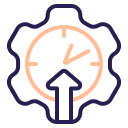Energy from the Kitchen, Not the Couch
Keep water within reach and pair sips with routine moments—after calls, before emails, during breaks. Add a tea ritual for warmth and calm. Hydration stabilizes energy, helping you finish on time without crash-driven snacking later.
Energy from the Kitchen, Not the Couch
Prep visible, grab-and-go options like nuts, yogurt, fruit, or cut vegetables. Move treats out of sight. A steady, protein-forward snack plan reduces mindless grazing at the desk and keeps your attention available for both work and family.

